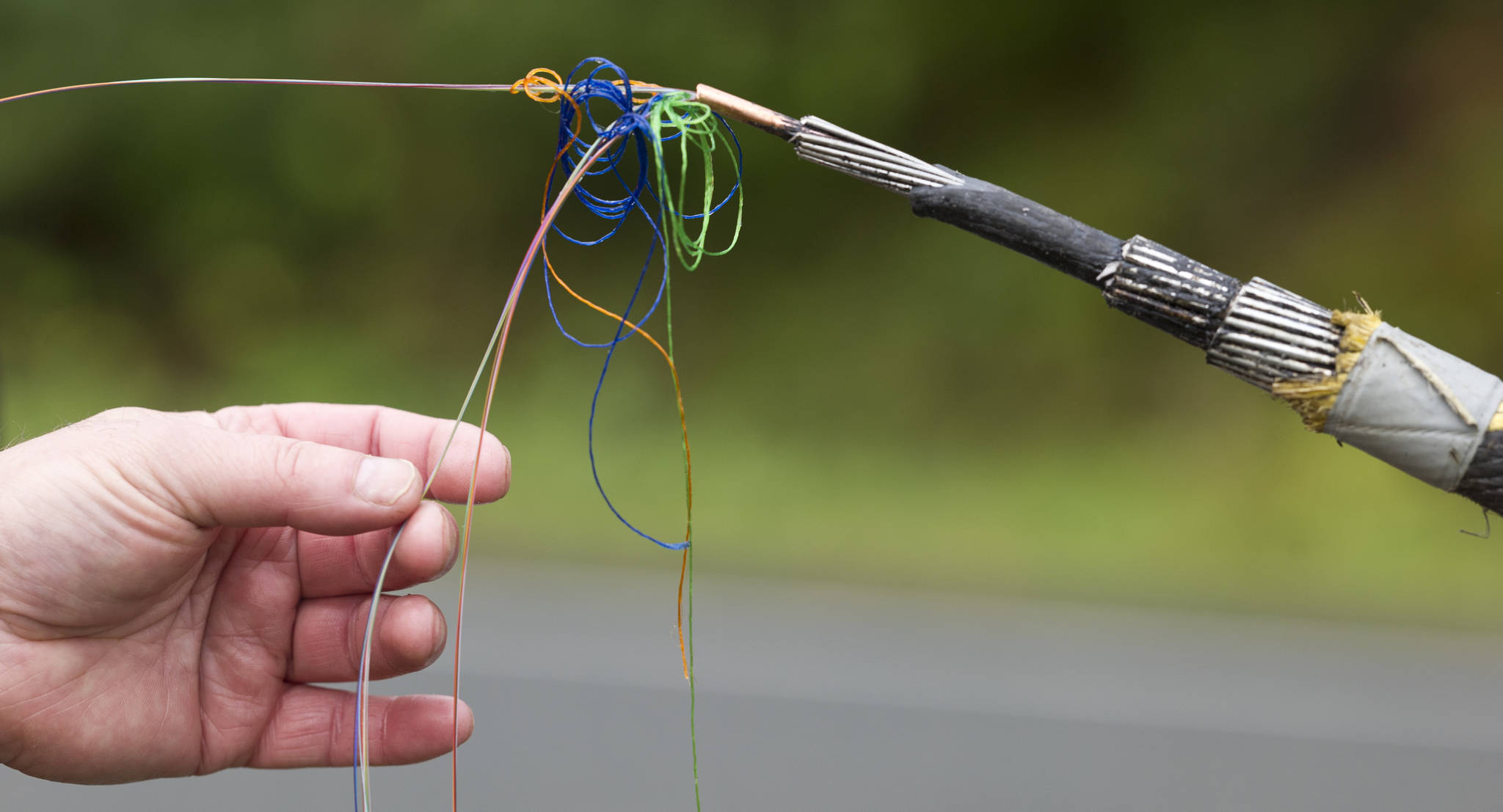GCI is considering a plan to lay undersea fiber-optic cable to one of Alaska’s most remote communities.
On Aug. 24, a GCI contractor began seafloor surveys to figure out how practical it would be to lay a cable to Unalaska.
GCI spokeswoman Heather Handyside said by phone that the surveying — performed by Terrasond Limited aboard the former Alaska State Troopers’ ship Woldstad — doesn’t guarantee a cable will be laid.
“Right now, we’re in the exploratory phase,” she said. “It is the nation’s top fishing port, and increasing activity in the Arctic increases the likelihood that it will remain busy and potentially grow.”
Unalaska and the Arctic in general are receiving increased attention from telecommunications firms: Melting Arctic ice is exposing waters that could allow a faster route for cable traffic between Asia and Europe.
Quintillion Networks is planning a three-phase project to connect those two continents through the Arctic. The first phase of that effort, through Alaska waters, was laid this summer, and when Quintillion-hired ships stopped in Unalaska, Quintillion vice president Kristina Woolston said the company was considering a spur to Unalaska.
GCI’s cable would be less ambitious an undertaking than Quintillion’s transcontinental approach. Handyside said the company is considering a line from Levelock, a small town at the mouth of the Kvichak River on the north side of Bristol Bay.
The line would run along the bottom of the bay and connect Unalaska to GCI’s existing network at Levelock. Handyside said the company has “no plans for a route to Japan or Asia at this time” and, unlike Quintillion, would fund the project itself.
Dave Martinson is Unalaska’s city manager and has been lobbying the two companies to connect his town, which occupies a portion of a mountainous island off the Alaska Peninsula.
Unalaska, which is the nation’s leading seafood port and has a population of more than 4,400 people, is the largest Alaska town not connected by fiber-optic cable to the rest of the world.
“People even in Alaska don’t really understand what happens here in Unalaska/Dutch Harbor,” he said.
Now that two companies are looking at a link, Martinson is optimistic.
“From my perspective, it’s good because we’ve got Quintillion looking at it, we’ve got GCI looking at it, and competition is always keen,” he said by phone.
Martinson is eager to see Unalaska connected by cable. Earlier this year, the city went so far as to lobby Alaska’s Congressional delegation in Washington, D.C. for help.
Currently, Unalaska is served only by satellite, which means connections have a long lag time and are expensive. A terrestrial link would allow video streaming and data transfer, he said, which is critical for business, health care and government.
The cost of the cable is the main reason Unalaska remains unconnected.
Laying a fiber-optic cable of any substantial length is an expensive undertaking. An 86-mile undersea cable between Haines and Juneau cost Alaska Power and Telephone more than $11 million. The distance between Levelock and Unalaska is substantially longer.
Handyside said GCI is examining the economics of an Unalaska cable, and the undersea survey now under way is only a part of determining whether a cable will be built.
“Everywhere we deliver service in Alaska is unique,” Handyside said, “but Unalaska presents some of the most unique conditions in Alaska.”
Handyside said no timeline is available for GCI’s go/no-go decision.
• Contact reporter James Brooks at james.k.brooks@juneauempire.com or call 523-2258.

